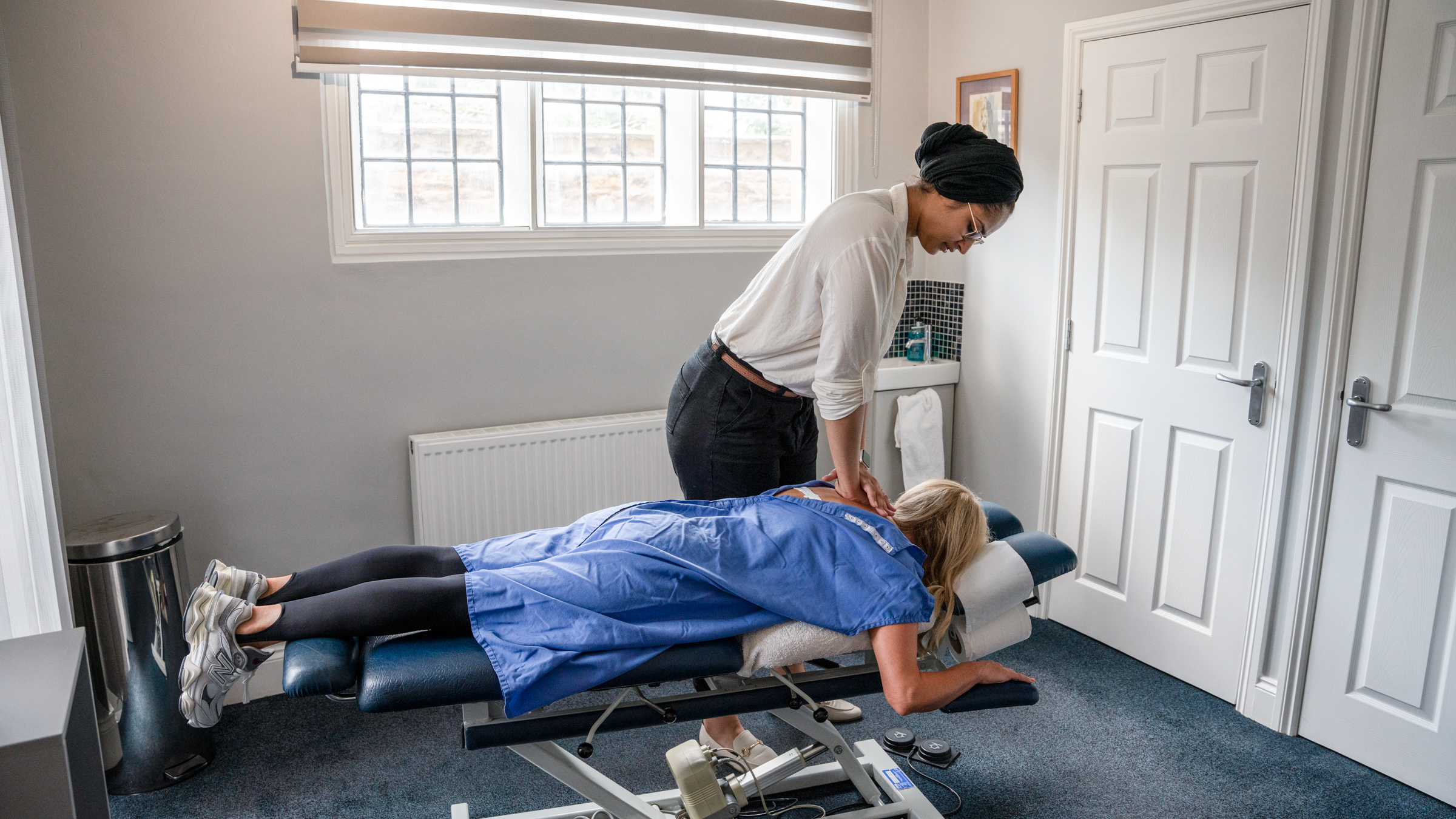
Poorly fitted bras, pain and Chiropractic treatment
An estimated 70% of all women are wearing poorly fitted bras, resulting in poor posture and pain. Read more about how you can assess if your bra has been fitted correctly…
Iliotibial Band Syndrome (ITBS) is a prevalent condition among runners, characterized by pain on the outer knee and often referred to as Runner’s Knee.
This discomfort arises due to the tightness or hyperactivity of the Tensor Fascia Lata (TFL) muscle, which is connected to the Iliotibial Band (ITB) running down the outer thigh from the hip to the knee. The repetitive rubbing of the ITB against the thigh bone during physical activities can cause inflammation and pain, significantly impacting an individual’s performance and daily life.

Want to know more? Request a Callback
Or give us a call, to find out how we can help you with Iliotibial Band Syndrome And Chiropractic Treatment.
Book an Appointment
Schedule an appointment for Iliotibial Band Syndrome And Chiropractic Treatment tailored to your needs.
Understanding the classic presentation of Iliotibial Band Syndrome, its underlying causes, and the role of chiropractic treatment in addressing the pain and discomfort is crucial for effective management and recovery.
Chiropractic care can alleviate symptoms by targeting the root cause and restoring proper function to the affected muscles and ligaments. Additionally, maintaining strong hip abductors, particularly the gluteus medius, is essential for preventing ITBS, as it alleviates the strain on the ITB. By exploring the complex relationship between the ITB and surrounding muscles, individuals can better appreciate the benefits of chiropractic care in tackling this common issue faced by many runners and athletes.
A fibrous ligament, called the iliotibial band (ITB), extends from the outside of the pelvis to the outside of the lower leg (tibia). When this band is tight it may rub against the bottom, outer portion of the thigh bone (femur) and cause pain or aching. The condition is common in runners.
The pain is caused by a tight or hyperactive Tensor Fascia Lata (TFL), a muscle which attach to the Iliotibial band, which runs down the outer thigh from the hip to the knee.
Repetitive rubbing against the bone on the outside of the knee during running makes the area inflamed.
If the main hip abductors are weak, mainly the gluteus medius, then the TFL must contract harder and over a period of time straining the ITB.
Predispositions to Iliotibial Band Syndrome include:
The most important aspect of treating iliotibial band syndrome is a full evaluation of the pelvic joints (sacroiliac joints) and lumbar spine function.
Any dysfunction here can contribute to weakness of the gluteal muscles due to neurological inhibition. This is often missed in the diagnosis of ITB syndrome and therefore you often find rehabilitation and soft tissue treatment efforts are ineffective leading to recurring problems.
It is also important to assess the feet for any joint dysfunction. Orthotics can be prescribed if pronation of the foot is present and specific adjustments, or manipulation, of the foot is given. This is followed by rehabilitation exercises for the feet.
Apart from dealing with the neuro-mechanical dysfunction of the pelvis, spine and feet soft tissue treatment has to be given. It consists of stretching of the iliotibial band and other associated tight musculature and strengthening of the weak musculature.
Other soft tissue techniques used by chiropractors include:
It is also important to have a rehabilitation strategy in the long term even when symptoms have lessened.
Chiropractors pay special attention to reactive core stability assessment and rehabilitation to prevent injuries in the longer term.